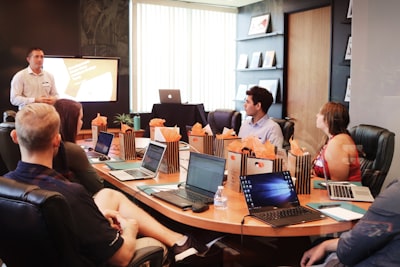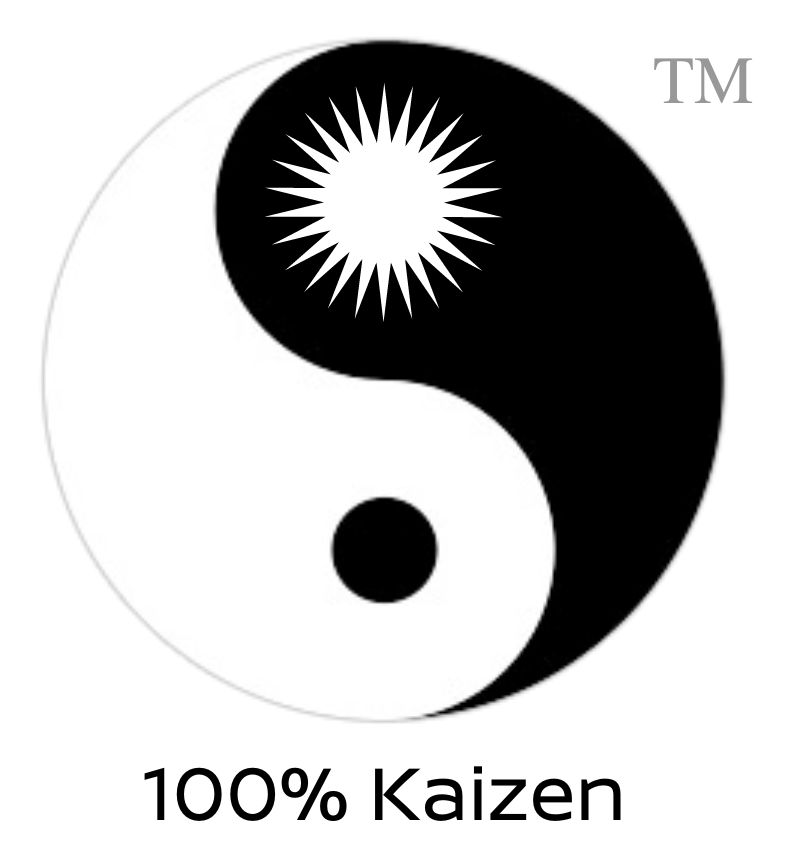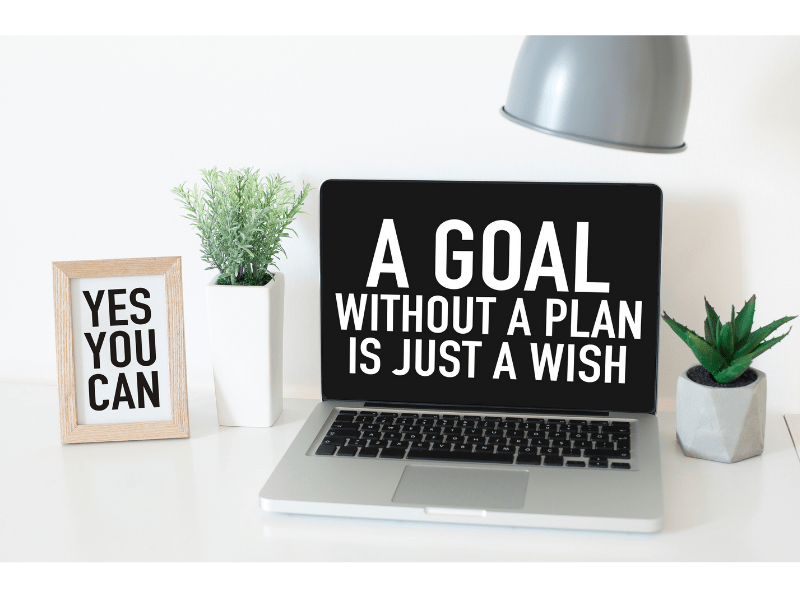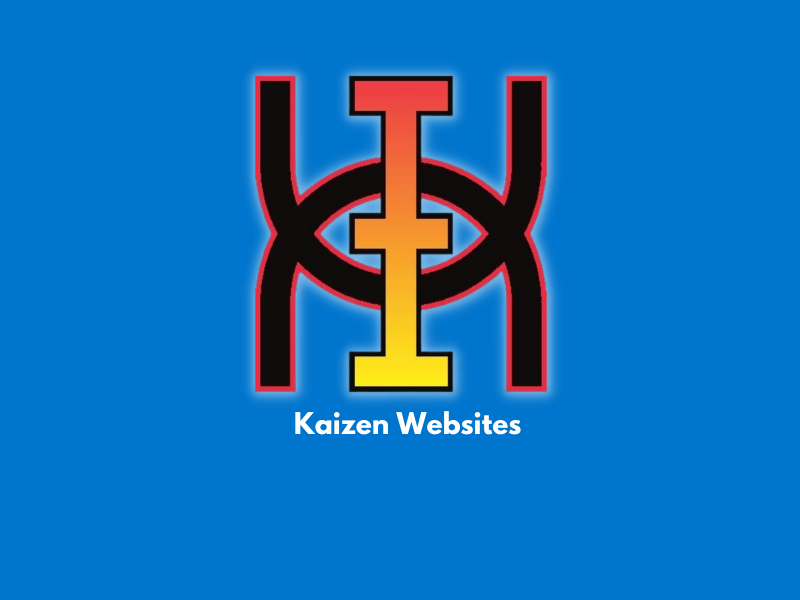Table of Contents
Have you ever heard of the ‘Kaizen 5s Process’? It’s an incredibly effective, yet simple Japanese business philosophy that has been changing and improving companies from all over the world. Many organizations have been using this strategy to increase productivity and efficiency within their operations, but what is it exactly? In this article, we’ll take a closer look at Kaizen 5s process and explain how it can help improve businesses big and small.
The Kaizen 5s process is based on five core principles: seiri (sort), seiton (set in order), seiso (shine or clean), seiketsu (standardize) and shitsuke (self-discipline). These steps are designed to create an efficient working environment that eliminates wastefulness while increasing profitability. By following these guidelines, employees will be able to better organize materials, workplace layout, processes and procedures for maximum effectiveness.
By implementing the Kaizen 5s process into your organization’s culture, you can benefit from improved quality control measures as well as increased employee morale due to cleaner work spaces. Keep reading to learn more about why the Kaizen 5s system should be adopted by companies today!

Definition
Kaizen 5s process is an incredibly powerful tool when it comes to continuous improvement and creating a better work environment. It is part of the larger kaizen event or method, which was developed by Toyota Production System in Japan as a way to increase efficiency. The 5S methodology focuses on sorting, setting in order, shining, standardizing, and sustaining activities within any organization.
The main goal of this technique is to facilitate quick problem-solving and foster a culture where everyone can make meaningful contributions for growth. This helps create an atmosphere that encourages communication between employees at all levels so that they can develop creative solutions efficiently without disruption to their workflow. It also provides structure for ongoing monitoring and evaluation of processes to ensure maximum effectiveness over time.
Origins Of The 5s Methodology
The 5S methodology originated in Japan and is based on five Japanese words: seiri, seiton, seiso, seiketsu, and shitsuke. These terms are easily remembered by the acronym “5S” and describe a process that results in improved workplace organization and efficiency. The 5S methodology has become an integral part of Lean Systems initiatives worldwide as it helps create visual cues for workers to use throughout their work areas. This aids with identifying items that need maintenance or removal from the workspace.
Today, there are many different ways organizations can incorporate the 5S system into their operations such as creating a Visual Workplace or Visual Factory which provide easy-to-follow instructions and other useful information. A Visual Workplace consists of signs, symbols, color codes, and labels to help improve understanding amongst team members while also streamlining processes. Implementing these strategies can ultimately result in more efficient production cycles due to better communication between teams. Additionally, using the 5S method ensures that potential hazards related to clutter are eliminated since all unnecessary materials have been removed from the work area.
Benefits Of 5s Implementation
The implementation of 5S in the workplace brings numerous benefits for both work area and team members. It creates a more organized, safe, efficient working environment that leads to improved business processes and lean manufacturing efforts. This system also promotes continuous improvement as it encourages workers to keep up with their organization’s mission and goals.
By implementing 5S, organizations can save money on labor costs due to increased productivity and reduced waste. Additionally, accidents are less likely to occur since the workspace is kept clean and free from clutter. Furthermore, morale among employees will be higher when they feel their workspaces are well-organized and conducive to better performance. Finally, by following this process, companies can create an atmosphere of collaboration which helps foster creativity and innovation within the workforce.

Step-By-Step Guide To Implementing 5s
The 5S process is an effective tool for improving workplace efficiency and productivity. It consists of five steps: Sort, Set in Order, Shine, Standardize, and Sustain. Management should identify the value stream mapping to help prioritize which areas require improvement most urgently. This will enable a more organized implementation of the 5S principles. Visual control is also essential to ensure that employees are working according to the standards set by management practices.
Once these steps have been implemented, it’s important to monitor the results so continuous improvements can be made as needed. Regular audits should be conducted at all levels of operations to assess compliance with established procedures and standards and make sure everyone is on board with following through with their commitments. Such audits provide key insights into how well the 5S system has been adopted within the organization. Proper tracking of progress helps leaders stay accountable when implementing new initiatives or making changes based on feedback from employees.
Seiri (Sort)
Seiri, or sorting, is the first step of the Kaizen 5s process. To begin this practice, one must first identify and remove all unnecessary items that are not essential to completing daily tasks. By doing so, it eliminates waste and helps to find the root cause of any issues. Afterward, kaizen events can be held on a regular basis in order to focus on the targeted process and develop solutions for improvement.
The primary purpose of seiri is to ensure that only necessary items remain in workplace areas while everything else is discarded or relocated. This increases productivity by reducing distractions which may slow down workflow processes. Additionally, proper organization makes it easier to locate information when needed as well as reduces clutter from building up over time. Thus, seiri serves as an effective foundation for creating an optimal working environment through simple yet efficient means.
Seiton (Set In Order)
The Seiton stage of the 5S process is about organizing and streamlining operations. It involves making incremental changes to an organization’s work processes, based on feedback from the voice of the customer. This stage requires top management to identify necessary items for workers and assign them a specific location in order to maximize efficiency.
It also includes label-making so everyone has a clear understanding of where tools and materials are located. By ensuring that all areas are organized, it helps reduce wasted time spent looking for parts or equipment as well as reduces errors due to any miscommunication between personnel. To sum up, this step creates an environment that encourages productivity by providing structure, which increases overall performance.
Seiso (Shine)
The second step of the Kaizen 5s process is Seiso, which means Shine. This involves cleaning and organizing the workplace to ensure that everything is clean, tidy and in good working order. It should be noted that this is not a one-off activity; it requires ongoing maintenance and improvement to keep things running smoothly. The first step towards achieving Seiso is identifying any areas which may require attention – such as clutter or dirtiness – and taking action to address them. These could be anything from rearranging furniture or tools to creating systems for better organization of materials or resources. Additionally, regular inspections can help identify potential problems before they become major issues. Once these have been addressed, further measures must be taken to maintain the high level of cleanliness and organization achieved during the initial implementation stage. This includes scheduling regular cleaning tasks, using appropriate cleaners and detergents, labeling items clearly, providing storage solutions where necessary, and ensuring everyone understands their role in maintaining an orderly environment. With effective implementation of Seiso in place, employees will benefit from improved safety standards, increased productivity levels, reduced costs due to fewer mistakes made by workers, and more efficient use of space within the workspace.
Seiketsu (Standardize)
The second step in the Kaizen 5s process is Seiketsu, or Standardize. This step can be likened to a mechanic who has taken apart and cleaned all of the parts of an engine: now that each part is clean and functioning properly, they must be organized in such a way so that the entire system works without fail. In this same vein, Seiketsu involves standardizing processes and procedures throughout the workplace.
This includes establishing systems for organization, communication, documentation and waste disposal among other tasks. It also means creating rules regarding how items should be labeled, stored and handled; outlining safety protocol; setting up maintenance frequencies; defining roles and responsibilities within teams; and more. By standardizing as much of your workflow as possible you increase efficiency while reducing errors or confusion around unclear expectations which could otherwise lead to costly delays or problems down the line.
Shitsuke (Sustain)
Shitsuke is the fifth and final part of the 5S process. It’s all about maintaining standards that have been set by earlier steps in the process, such as Sort and Set in Order. This means ensuring that everything stays clean and organized; for example, making sure items are stored where they should be and that any messes or hazards are immediately taken care of. In order to do this successfully, it’s important to develop a culture of discipline within the workplace. Employees need to understand why following these rules is beneficial, so training sessions and regular reminders can help ensure everyone stays on track. Additionally, creating clear policies around what needs to be done will keep people accountable when it comes time to maintain their workplaces’ organization. Ultimately, Shitsuke ensures that all efforts made during previous parts of the 5S process don’t go to waste – keeping things neat and tidy allows workers to get their tasks done more efficiently without having to worry about clutter or disorganization getting in their way.

Training And Education
At a manufacturing plant in the Midwest, Jim and his team implemented a 5S program to improve safety and quality control. Through training sessions for their employees, they were able to teach basic principles of:
- Reducing waste
- Increasing efficiency
- Enhancing ergonomics
Jim’s team developed an extensive list of topics that focused on workplace organization and standardizing processes. They also outlined specific guidelines for maintaining cleanliness within the facility. This included sorting tools into categories based on size and function, labeling shelves with the proper names for inventory items, and creating designated workstations for each task. With this comprehensive approach to process improvement, everyone at the factory was empowered to contribute to the success of the 5S program.
In order to ensure long-term buy-in from all employees, Jim’s organisation provided ongoing education opportunities like weekly seminars or lunchtime lectures. These trainings covered various aspects of 5S implementation such as understanding how different departments operate, developing new systems for tracking progress, and avoiding common pitfalls associated with implementing process changes. The goal was to create an environment where every employee felt comfortable sharing ideas while striving towards continuous improvement initiatives.
Evaluating Performance And Progress
Now that employees have been trained and educated on the 5S process, it’s time to evaluate their performance and progress. This is an important step in ensuring that the 5S system is being implemented correctly and consistently throughout the organization. The evaluation should include both quantitative data such as key metrics, as well as qualitative feedback from supervisors or coworkers.
Data analysis can help identify areas of improvement and gaps in the implementation of 5S, while feedback can provide insight into how those changes are being perceived by other employees. Managers must ensure they are providing ongoing support for any necessary changes while also recognizing their team members’ successes in implementing the new system. By taking these steps, organizations will increase the effectiveness of their 5S program and create a better workplace environment overall.
Challenges Of Adopting The Kaizen 5s Process
Implementing the Kaizen 5S process can be a challenge for many organizations. First, it requires organizational commitment from the top down to ensure that all employees are on board with the new system and understand their roles in its success. Second, it necessitates an understanding of how each step works together to maximize efficiency and productivity. Finally, it demands adequate training and resources so that staff members have the necessary skills and tools to make this system work effectively.
However, if companies invest both time and effort in implementing this method correctly, they will reap great rewards such as improved quality control, increased safety levels, reduced wastefulness and higher employee morale. Through specific steps like sorting items into categories, setting up standards for organization and identifying areas for improvement, businesses can create an environment where workers take more pride in their workplace and feel empowered to do their best work every day.
Tools For Achieving The Kaizen 5s Goal
In order to bridge the gap between challenges and success, it is important to have specific tools in place. These tools can help organizations achieve their Kaizen 5S process goals. The following table outlines some of these essential elements:
| Tool | Purpose |
|---|---|
| Sort | Separates necessary items from unnecessary ones and determines where each item should be placed for quick retrieval. |
| Set In Order | Creates a designated area for each item so that they are easily accessible when needed. |
| Shine/Sweep/Scrub | Ensures that all areas remain clean and organized by routinely wiping down surfaces or sweeping floors. This also includes regular maintenance, such as changing air filters or light bulbs. |
| Standardize | Establishes consistent processes and procedures in an effort to maintain organization on an ongoing basis. Includes labeling items and creating visual reminders, like posters, signs or checklists. |
| Sustain Discipline & Self-Discipline | Involves training personnel on proper procedures and encouraging them to take ownership of their workspace with pride and respect. Requires managers to regularly audit progress towards meeting goals while providing feedback on performance in order to drive continuous improvement initiatives over time. |
These five tools provide the foundation upon which successful implementation of the Kaizen 5s process rests, ensuring that businesses can maximize efficiency while minimizing waste. It’s up to the team leaders to ensure that everyone understands how best to use these resources in order to make the most out of this powerful system. With the right guidance and commitment, organizations can reap the rewards of implementing Kaizen 5S principles both quickly and effectively!
Continuous Improvement Strategies
The Kaizen 5s process is an essential part of the continuous improvement strategy. It allows employees to quickly recognize and address problems, identify areas for improvement, and develop solutions that can be implemented rapidly. The five steps in the process are sort, set in order, shine, standardize and sustain. This encourages a workplace culture that emphasizes safety, cleanliness, organization and efficiency.
By engaging all levels of personnel within the company, this method allows them to work together towards common goals and objectives. Teamwork is key when it comes to successful implementation of these strategies as well as developing proactive approaches that will help maintain processes over time. Furthermore, effective communication between team members ensures everyone understands their roles and responsibilities throughout each step of the process. With this collaborative effort and commitment from management, businesses can achieve long-term success through continual development of processes that create value for customers.
The Future Of Kaizen 5s
Moving forward, Kaizen 5s will continue to evolve and be a major part of continuous improvement strategies. It is an ever-changing process that requires regular reassessment and refinement in order to remain successful. As businesses begin to recognize its importance and understand the benefits it can have on their operations, they’ll likely become more invested in ensuring its success by providing adequate resources for training employees, setting up systems for tracking progress, and monitoring key performance indicators (KPIs).
The future of Kaizen 5s looks bright as many companies are already beginning to implement it into their organizations. With the help of technology, such as AI-driven analytics tools that give real-time insights into how processes are performing within the organization, there will be even greater opportunities for optimization with this system. Additionally, new techniques like machine learning may also provide additional support in streamlining certain aspects of this system so that it becomes easier than ever before to sustain.
Frequently Asked Questions
What Additional Resources Are Available To Help With Kaizen 5s Implementation?
When it comes to implementing a system, there are many resources available. Whether you’re looking for advice on how to create an effective plan of action or need help with the implementation process itself, there is no shortage of options. When it comes to Kaizen 5s implementation specifically, additional resources can be incredibly helpful.
For starters, there are plenty of online guides and tutorials that provide detailed steps on how to get started. Additionally, local organizations may offer workshops or seminars designed to educate business owners on the ins-and-outs of Kaizen 5s implementation and its benefits. Consulting services often specialize in helping companies implement this process as well; they typically have vast knowledge and experience with Kaizen which makes them great resources when navigating through the nuances of 5s implementation. Finally, if your organization has a specific problem or challenge related to Kaizen 5s implementation that needs resolving, expert advisors can provide valuable insights into best practices and solutions tailored for your company’s situation.
No matter what type of assistance you need when it comes to getting your Kaizen 5s program up and running smoothly, rest assured that all necessary resources are out there waiting to be accessed. With a little effort and research, you’ll likely find exactly what you’re looking for quickly and efficiently.
Does Kaizen 5s Work In All Industries?
Have you ever wondered if the Kaizen 5s process works in all industries? This system of improvement has been used for decades, but does its success translate across different sectors? The answer is yes – with some modifications.
The Kaizen 5s process can be applied to any business or industry regardless of size and scope. Here are a few examples of how it can create positive change:
- Streamlining processes:
- Defining roles and responsibilities within departments
- Developing standard operating procedures
- Automating tasks where possible
- Improving efficiency:
- Implementing better inventory management systems
- Reducing waste through recycling programs and green initiatives
- Encouraging cross-functional collaboration between departments
- Increasing employee engagement:
- Creating an environment that encourages continuous learning and development
- Establishing performance benchmarks and goal setting practices
- Fostering an open dialogue among employees about their ideas for improving processes and services.
It’s clear that adopting the Kaizen 5s model not only makes businesses more efficient, but also allows them to become more innovative and productive by engaging their workforce. By encouraging teams to collaborate on solutions, companies can leverage this approach to develop unique strategies tailored to their specific needs. In addition, implementing these changes helps strengthen relationships between different stakeholders, allowing organizations to build stronger partnerships with customers and suppliers alike. All in all, it’s no doubt that the kaizen 5s process offers something beneficial to every industry!
What Is The Best Way To Measure Progress When Implementing Kaizen 5s?
Measuring progress is an essential part of any process. When implementing Kaizen 5s, it’s important to find the best way to measure progress in order to ensure success. This can be done by setting clear and attainable goals, tracking performance metrics over time, engaging with stakeholders, and providing feedback on results.
Setting measurable goals is key when measuring progress during a Kaizen 5s implementation. Goals should not only be specific but also achievable within a realistic timeline. Establishing baseline measurements and tracking these over time can provide data-driven insights into which areas need improvement or further investment. Additionally, involving stakeholders throughout this process will help ensure that everyone is working towards the same objectives and expectations are met.
To keep track of progress as changes are implemented, regular assessments should be conducted to determine how effective they have been. Providing timely feedback on results gives teams the opportunity to make adjustments if needed so that their efforts remain aligned with set goals. By taking all of these steps into consideration when assessing progress during Kaizen 5s implementation, organizations can ensure successful outcomes for their initiatives.
What Are The Most Common Challenges Faced When Implementing Kaizen 5s?
How can companies ensure the successful implementation of Kaizen 5s? This process has become increasingly popular as organizations realize its potential for streamlining operations and improving efficiency. Unfortunately, there are a few common issues that may arise during its implementation. So, what are these challenges and how can they be addressed?
First off, it is important to note that implementing Kaizen 5s requires careful planning and execution. Without proper preparation, many of the steps in the process will not take place correctly or on-time leading to delays or worse still project failure. Additionally, there needs to be full commitment from all stakeholders involved including management, staff and other departments within the organization if success is to be realized.
Informational alert message.
To further understand some of the common obstacles faced when introducing Kaizen 5s into an organization we can look at:
- Training – Employees need adequate training in order to complete their tasks properly and efficiently. If this is not provided then mistakes could be made which lead to costly errors down the line.
- Resistance To Change – Many people don’t like change; especially when procedures already exist that have been working well up until now. It is therefore key that those affected by any changes understand why they are being implemented and how they benefit them before trying to move forward with the new processes.
- Time And Resources – Introducing any kind of system takes time – both in terms of setting up as well as ensuring everyone understands it fully once underway. Furthermore, resources must also be allocated accordingly so that employees aren’t overworked or stretched too thin due to having taken on additional responsibilities without extra help or guidance where needed .
In summary, one of the most significant factors in determining whether Kaizen 5s succeeds is ensuring clear communication between all parties involved throughout every stage of implementation while keeping track of progress along the way. With care and attention paid towards addressing each challenge mentioned above businesses should find themselves able to reap the rewards this process offers sooner rather than later!
Are There Any Specific Tools Or Technology That Can Be Used To Facilitate Kaizen 5s?
There are many tools and technologies available to help facilitate effective operations, but what about when it comes to complex processes? Are there specific tools or technology that can be used for Kaizen 5s process? When implementing Kaizen 5s, it is important to have the right resources in place.
Technology can play a critical role in helping with the implementation of Kaizen 5s. For instance, digital monitoring systems such as X-Ray vision scanners can be used to track parts movement on assembly lines and help identify opportunities for improvement. In addition, mobile applications allow users to easily capture data from various locations throughout the facility and provide visibility into how activities are being completed. Finally, software solutions can be utilized for tracking inventory levels and providing real-time information about production performance.
These tools and technologies not only make it easier to implement Kaizen 5s within an organization’s operations but also allow organizations to continually monitor their progress towards reaching desired outcomes more efficiently and effectively. As such, these types of technological advancements should not be overlooked when evaluating strategies for successfully incorporating Kaizen 5s process into corporate culture.
Conclusion
In conclusion, Kaizen 5s is a powerful and effective process for businesses of all sizes. It can help to create an efficient workplace that eliminates waste and encourages continuous improvement. With the right resources, tools and technology in place, any organization can take advantage of this system to drive positive change.
It’s estimated that companies who implement Kaizen 5s have seen up to 30% decrease in costs, as well as improved customer satisfaction scores. This impressive statistic highlights just how successful the process can be when done correctly. I’m confident that with planning and dedication, any business could achieve similar results from their own implementation program.
Overall, Kaizen 5s is an incredibly beneficial practice which has been proven to bring great success in many different industries. If you’re looking to make improvements at your company it may be worth investigating further – the rewards could be huge!




